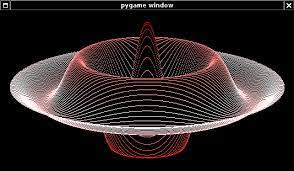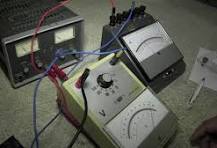- Enseignant: fares zaoui
- Enseignant: abdelhalim kessal
- Enseignant: wassila tahi

This summary covers the main numerical methods studied in the following chapters:
Chapter 1: Solving Nonlinear Equations f(X) = 0
1. Bisection Method: A method to find a root of an equation by dividing the search interval into two equal parts and selecting the interval containing the root.
2. Fixed-Point Method: A method to find a root of an equation by transforming the equation into an equivalent form ( X = g(X)) and iterating the function ( g ) from an initial guess ( X_0 ) until convergence to the root.
3. Newton-Raphson Method: A method to find a root of an equation using the tangent approximation of the function ( f ) at ( X0) and iterating toward the root.
Chapter 2: Polynomial Interpolation
1. Lagrange Method: A method to interpolate a function using a polynomial of degree ( n ) that passes through ( n+1 ) points.
2. Divided Differences Method (Newton's Polynomial): A method to interpolate a function using a polynomial of degree ( n ) that passes through ( n+1 ) points, with coefficients calculated using divided differences.
Chapter 3: Numerical Integration
1. Trapezoidal Rule: A method to compute the integral of a function by approximating the area under the curve using trapezoids between interval points.
2. Simpson's Rule: A method to compute the integral of a function by approximating the curve with a second-degree polynomial.
Chapter 4: Solving Differential Equations
1. Euler's Method: A method to solve ordinary differential equations by approximating the solution with straight-line segments.
2. Modified Euler's Method: A method to solve ordinary differential equations using an improved approximation of the average slope.
3. Runge-Kutta Method (2nd Order): A method to solve ordinary differential equations using a weighted average slope approximation.
4. Runge-Kutta Method (4th Order): A method to solve ordinary differential equations using a more accurate weighted average slope approximation with four steps.
Chapter 5: Direct Methods for Solving Systems of Linear Equations
1. Gaussian Elimination: A method to solve systems of linear equations by transforming the system into an upper triangular form using elementary row operations.
2. Gauss-Jordan Elimination: A method to solve systems of linear equations by transforming the system into reduced row echelon form using elementary row operations.
3. Tri-diagonal Matrices (Thomas Algorithm): A method to solve tridiagonal systems of linear equations using forward and backward substitution.
- Enseignant: mourad hamimid
Cet enseignement vise à développer les compétences de l’étudiant, sur le plan personnel ou professionnel, dans le domaine de la communication et des techniques d’expression.
- Enseignant: idhir nezzari
- Enseignant: abdelhalim bencheikh
Le TPLc aide les étudiants à passer vers la pratique pour bien maîtriser et comprendre le module
- Enseignant: zahira bouguerra
Le but de ce TP est la programmation des différentes méthodes numériques en vue de leur application dans le domaine des calculs mathématiques en utilisant un language de programmation scientifique (Matlab).
- Enseignant: abdelaziz diaf
- Enseignant: ziyad bouchama

